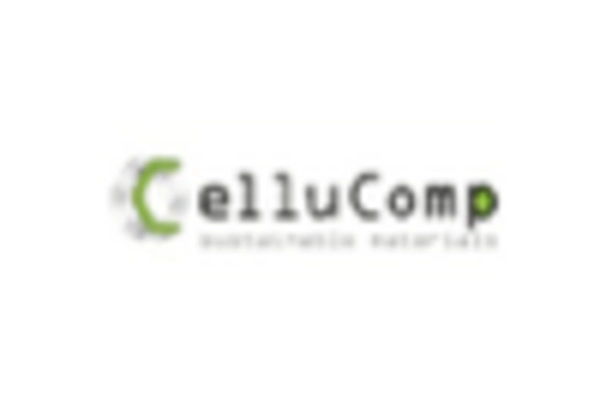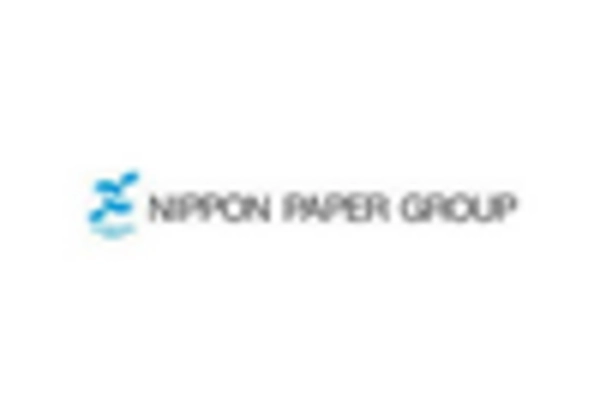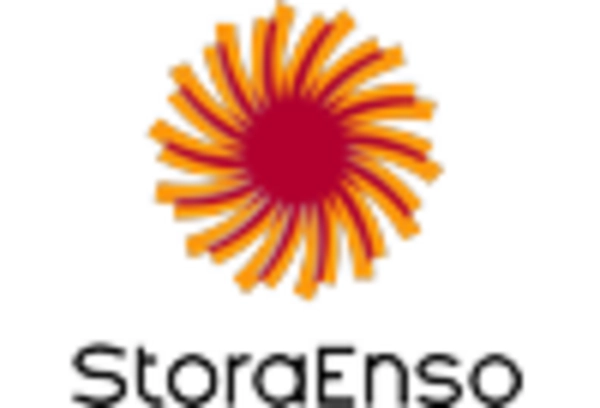Technological Innovations
Technological advancements in the production of microfibrillated cellulose are likely to propel the Microfibrillated Cellulose Fiber Market forward. Innovations in processing techniques, such as high-pressure homogenization and enzymatic treatments, have improved the efficiency and quality of cellulose extraction. These advancements not only reduce production costs but also enhance the performance characteristics of the fibers, making them suitable for a wider range of applications. The market is expected to witness a compound annual growth rate of over 10% in the coming years, driven by these technological improvements. As manufacturers adopt cutting-edge technologies, the versatility of microfibrillated cellulose is likely to expand, further stimulating market growth.
Rising Demand in Packaging
The packaging sector is experiencing a notable shift towards sustainable materials, which is likely to benefit the Microfibrillated Cellulose Fiber Market significantly. With The Microfibrillated Cellulose Fiber Market projected to reach trillions in value by 2025, the demand for lightweight, strong, and biodegradable materials is on the rise. Microfibrillated cellulose offers an attractive solution, providing excellent barrier properties and mechanical strength. This trend is particularly evident in the food and beverage industry, where packaging must meet stringent safety and sustainability standards. As companies strive to enhance their packaging solutions, the incorporation of microfibrillated cellulose is expected to grow, thereby driving market expansion.
Sustainability Initiatives
The increasing emphasis on sustainability appears to be a pivotal driver for the Microfibrillated Cellulose Fiber Market. As industries seek to reduce their carbon footprints, the demand for eco-friendly materials has surged. Microfibrillated cellulose, derived from renewable resources, offers a biodegradable alternative to synthetic fibers. This shift towards sustainable practices is not merely a trend; it is becoming a necessity for compliance with stringent environmental regulations. In 2025, the market for sustainable materials is projected to reach substantial figures, indicating a robust growth trajectory. Companies are likely to invest in microfibrillated cellulose to align with consumer preferences for environmentally responsible products, thereby enhancing their market position.
Growth in Composite Materials
The increasing utilization of microfibrillated cellulose in composite materials is emerging as a significant driver for the Microfibrillated Cellulose Fiber Market. As industries such as automotive and construction seek lightweight yet durable materials, microfibrillated cellulose is being integrated into composites to enhance their mechanical properties. The Microfibrillated Cellulose Fiber Market is anticipated to witness substantial growth, with projections indicating a value exceeding hundreds of billions by 2025. This trend suggests that microfibrillated cellulose could play a crucial role in meeting the demand for high-performance composites, thereby fostering market growth. The versatility of microfibrillated cellulose in various applications positions it as a key player in the evolving materials landscape.
Consumer Preference for Natural Products
The shift in consumer preferences towards natural and organic products is likely to drive the Microfibrillated Cellulose Fiber Market. As consumers become more health-conscious and environmentally aware, there is a growing demand for products that are free from synthetic additives. Microfibrillated cellulose, being a natural polymer, aligns well with these consumer trends. The personal care and cosmetics industries, in particular, are witnessing a surge in the use of natural ingredients, with market forecasts indicating a significant increase in the demand for natural formulations. This consumer inclination towards natural products is expected to bolster the market for microfibrillated cellulose, as manufacturers seek to cater to this evolving consumer base.


















Leave a Comment